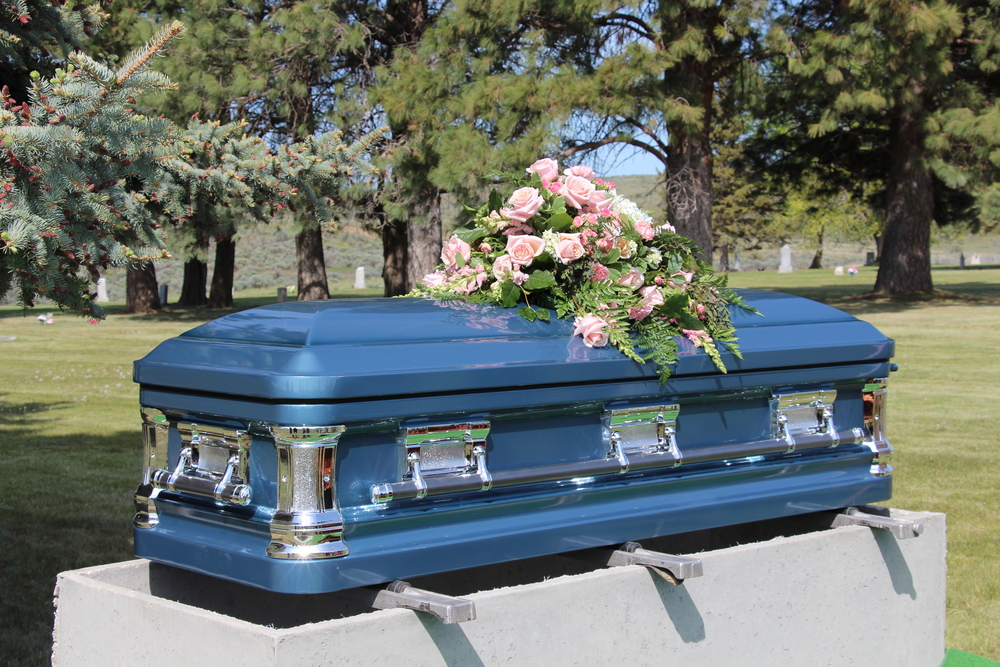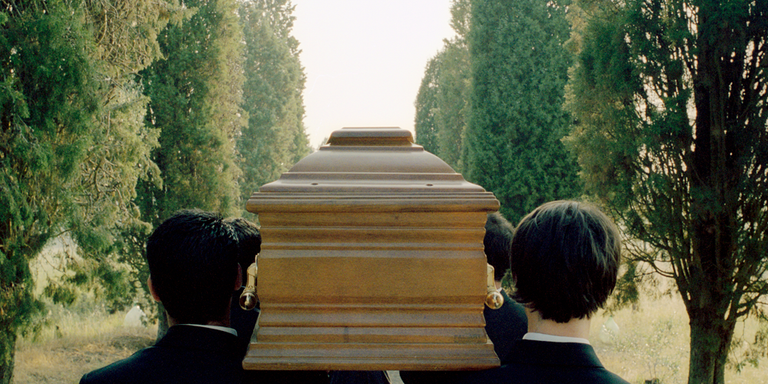
What Is a Traditional 20th-Century U.S. Burial?
by
by
3 min readAlmost half of Americans bury their dead. At its heart, burial is a very simple concept: A hole is dug; a body is placed in it and covered with earth. When we refer to a "traditional 20th-century American-style burial," we're being a little more specific: We mean a burial that includes embalming, a coffin or casket, and a burial vault – three elements that have become somewhat standardized over the past 150 years.
In the traditional American burial, the body is typically embalmed shortly after death. The purpose of embalming is to prevent the natural process of decomposition that begins at death. This allows the body to be displayed for several days, for visitation and funeral services, prior to burial.
The embalming process replaces the body's natural fluids with embalming fluid, a combination of chemicals including formaldehyde and methanol. Although embalming is common in situations in which the body will be buried rather than cremated, it's not required by law in any U.S. states. In traditional Jewish funerals, for instance, the body is not embalmed.
The actual burial typically adds at least two layers of materials between the body and the earth. The body is placed in a coffin or casket, made of materials that can range from simple unfinished wood to a more elaborate combination of wood, metal, fabric, varnish and/or paint, polyester batting, rubber, and other materials.
The casket is often not buried directly in the earth – first, a burial vault or grave liner is fitted in the earth, and the coffin is lowered into it. The burial vault or grave liner is typically made of concrete, metal, or hard plastic. A burial vault is a complete cube, while a grave liner is open on the bottom. Some cemeteries require vaults or liners as an aid to their landscaping – they prevent the earth from caving in around the casket. This is the primary function of a vault or liner.
It's worth noting that, while traditional 20th-century U.S. burial was absolutely the standard for a time, it's on the decline, and cremation has become more commonly used. As of about 2015, more Americans were choosing cremation than burial. This choice stems in part from financial concerns – cremation is typically much less expensive than burial with an elaborate casket and vault or liner.
A desire for environmental sustainability also motivates some people to opt out of embalming, traditional caskets, and burial vaults. Traditional 20th-century U.S. burial places harmful chemicals and non-biodegradable materials in the earth, where they can contaminate the soil and groundwater. It also takes up a lot of space that typically isn't used for multiple purposes.
Traditional 20th-century U.S. burial often goes hand in hand with a traditional funeral service, one that includes a visitation, a spiritual ceremony, a eulogy, a procession, and a graveside service. But they can also exist independently of each other – a person can be buried without the common services taking place, or they can have a traditional funeral but opt for cremation, eco-friendly burial, or another method of body disposition.
More funeral planning help
- Download your free funeral-planning guide and checklist
- Burial and cremation alternatives
- Should I have a traditional funeral service?
- How to shop for a funeral home
TAGS




